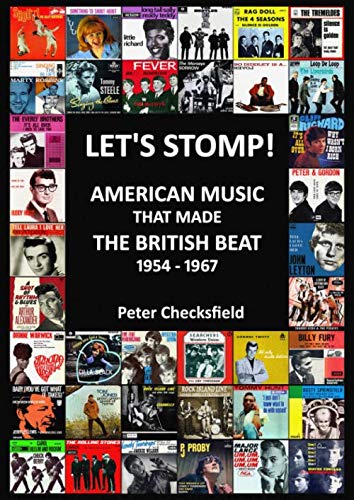
Guide to British Music of the 1960s
May 2020
Book Review
Let's Stomp! by Peter Checksfield

A lot of the American artists included were unknown in the UK. It is often stated that a reason for the explosion in groups in Liverpool in the early 1960s was because it was a port. Sailors would return on ships from the US bringing armfuls of records that could not be purchased in the UK. It then became a race amongst the groups to see who could transpose the chords and lyrics and get the song into their set first. Consequently, a lot of the Merseybeat bands had similar live sets.
Bo Diddley was a very popular source of material. I'm a Man was covered by the Yardbirds, the Creation and the Who amongst others. Mona made the first Rolling Stones album as well as the Troggs' Trogglodynamite. The Pretty Things even took a Bo Diddley song as their name and covered Pretty Thing on their debut!
By the end of the 1960s more artists were writing their own material or using material written in the UK so there was less reliance on imports from the US. Nevertheless, even the debut Deep Purple single Hush was a cover of a song by US country singer Billy Joe Royal.
It may be beyond the scope of this book but British artists also leaned heavily on their influences when writing their own tracks. Booker T & the MGs were a clear influence on the Small Faces and, aside from covering the instrumental Plum Nellie, the Hammond sound was present in the band's jams such as Come on Children and E too D. The Small Faces also took the Willie Dixon track You Need Love and wrote You Need Loving which Robert Plant and Jimmy Page later turned into Whole Lotta Love. Paul McCartney, in particular, was a massive Little Richard fan and Long Tall Sally was not only a staple of the Beatles set but the style was also clear in the Help b-side I'm Down. The Yardbirds had Train Kept a Rollin' as a staple part of their set throughout their career even into early Led Zeppelin days and transformed it into Stroll On for the film Blow Up.
This book is a fascinating read. It works better as a reference work, dipping in and out when desired, rather than a cover to cover read. It is very interesting seeing just how popular some songs were in the UK and in many cases, the UK artist was more successful than the original artist. This was a feature of the British music explosion. As a generalisation British artists took their influence from the US and, a few years later, took their sounds back to the US and made £££s.
Published: 31 March 2020